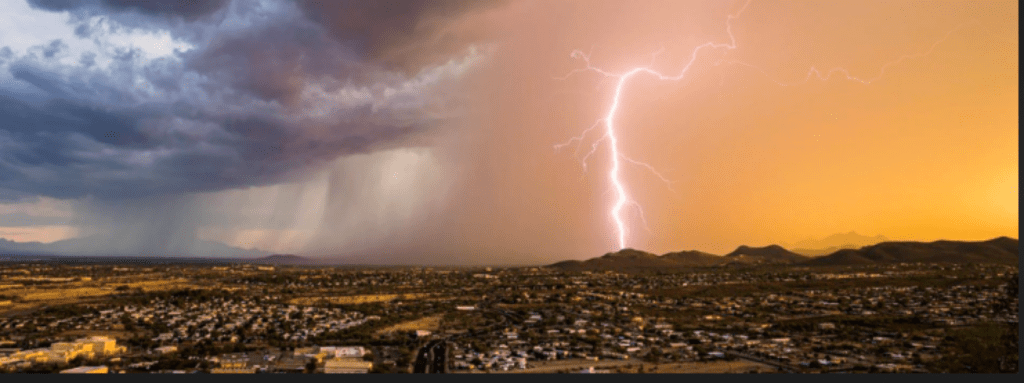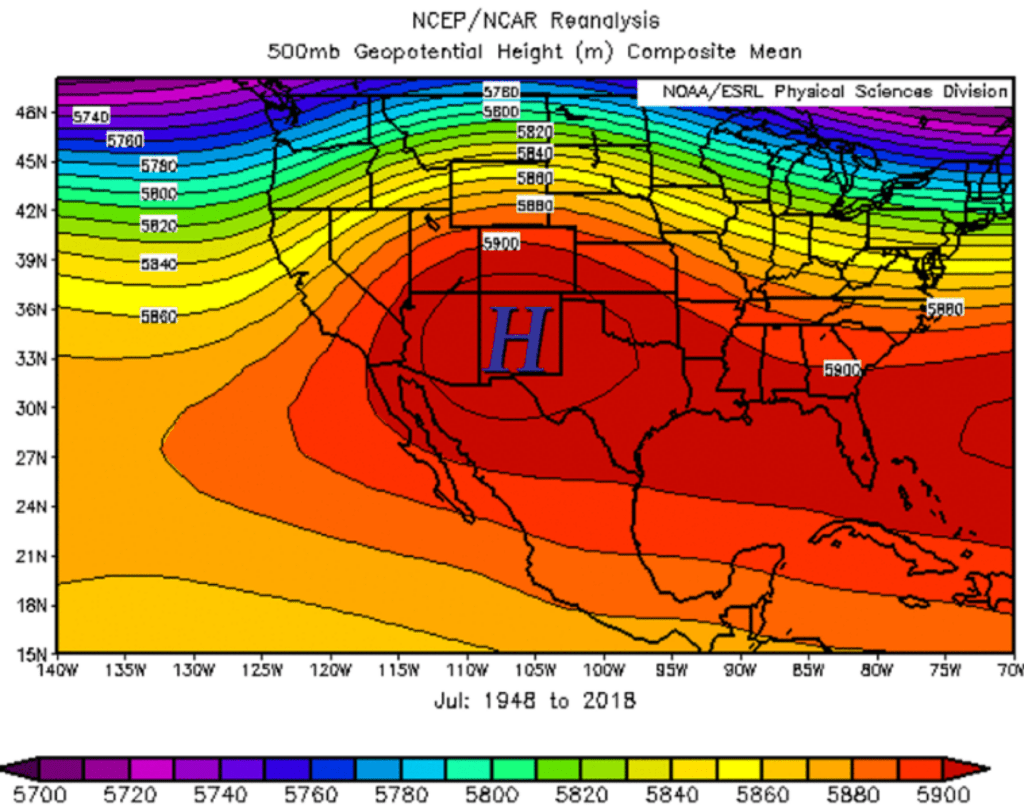Daniel Salzler No. 1060
EnviroInsight.org 3 Items July 24, 2020
Feel Free To Pass This Along To Others
If your watershed is doing something you would like others to know about, or you know of something others can benefit from, let me know and I will place it in this Information newsletter.
If you want to be removed from the distribution list, please let me know. Please note that all meetings listed are open.
Enhance your viewing by downloading the pdf file to view photos, etc. The
attached is all about improving life in the watershed.
This is already posted at the NEW EnviroInsight.org
1. Basic Monsoon Information In northern Arizona, monsoonal moisture typically does not reach the region until the first week of July. Many different factors throughout the spring and early summer influence when exactly it begins each year. Much of the area receives 40-50% of it’s annual precipitation during monsoon season.

This rainfall is especially important to help replenish reservoirs in the area, along with local farming in the area.
Rainfall during these months is not continuous, but comes most days in the form of afternoon and evening thunderstorms. It is incorrect to call one single thunderstorm a “monsoon”, instead it is a large-scale weather pattern that causes these thunderstorms.
What Exactly Is The Monsoon?
The term “monsoon” describes large-scale wind shifts that transport moist tropical air to dry desert locations, such as the southwestern United States. A monsoon pattern also affects several other locations around the world including Southeast Asia, Australia, Africa, and South America. The Indian Monsoon is the strongest in the world due to the height of the Tibetan Plateau.
So why do these wind shifts occur? Intense heating of the land over Mexico and the southwestern United States in the early summer months creates the wind shifts in the low levels. Moisture begins to be carried off of the Gulf of California and eastern Pacific Ocean (the two main sources for monsoonal moisture in northern Arizona). These winds transport moisture northward into Mexico and the American Southwest. Additionally, another key component of the monsoon development is in the upper levels of the atmosphere. A strong subtropical ridge of high pressure is located over Mexico during June which acts to block moisture flow toward the north. This is why northern Arizona normally sees some of the hottest and driest weather of the year during June. However, as we head into late June and early July the ridge of high pressure shifts northward into the Southern Plains or Southern Rockies. The shifting ridge axis allows low and mid level moisture to move northward. The combination of the low, mid, and upper level moisture surge to the north culminates in the real beginning of annual monsoon season. The combination of these atmospheric events are signs that forecasters watch for closely on long range model guidance leading up to the monsoon season.The strength and position of the subtropical ridge changes throughout monsoon season and plays an important role in the location and coverage of thunderstorms. This is why we see fluctuations in rainfall across the area from day to day. One positive trigger for rainfall during the monsoon season in northern Arizona is the high elevation area known as the Mogollon Rim. This land feature acts as a trigger for showers and thunderstorms on most days during the monsoon season.

In most years, the monsoon season begins to wind down across northern Arizona in September. There tends to be longer breaks between the rounds of showers and thunderstorms. This is because the atmosphere is not as warm and the weakened subtropical ridge has begun to shift southward again. However, this period can be where we see our most severe weather with cooler Pacific Ocean troughs combining with lingering monsoonal moisture.
Is Every Monsoon Season Similar?
No, each monsoon season is different in almost every aspect from the onset/end, to the amount of available moisture and to the location of the heaviest rainfall. Precipitation totals vary widely each monsoon season and within each season, amounts change quite dramatically from city to city. The reason for this is the widely scattered nature of the monsoonal thunderstorms. Figures 2 and 3 below illustrate this concept well with the differences in precipitation between the two cities. As an example, during the 2013 monsoon season, Flagstaff recorded well above normal monsoon season total precipitation, while Prescott was almost two inches below normal
Things To Remember (Tucson Fire Dept)
- Be alert to low-water crossings or washes. Eight to12 inches of water can float a vehicle, so stay out of flowing washes. Washes can fill up in seconds even if it is NOT raining where you are.
- When thunder roars, head indoors if you hear the thunder within 30 seconds of seeing the lightning.
Other Things To Remember (Sources: many)
- Stay out of the pool/pond when you see lightening or hear thunder
- When driving, carry extra supplies, including a fully charged cell phone, drinking water and an emergency kit (including protein bars) in case you experience an extended highway closure.
- When faced with low- or zero-visibility conditions, pull your vehicle off the road as far to the right as possible. Turn off your lights, set the parking brake, and take your foot off the brake pedal. These steps reduce the chances that other drivers mistake your vehicle as the one to follow.
- Do not drive around “Road Closed” signs. You risk your life and face being cited under the state’s Stupid Motorist law(link is external).
- If traffic lights are out, treat an intersection just like a four-way stop.
- Storm runoff can loosen boulders and rocks on slopes above highways. Stay alert in areas prone to falling rocks.
- Check around your home to make sure that only stormwater goes down the storm drains – no oil, no antifreeze, no paint, no……………
- Turn off your home AC during a dust storm. Use room or ceiling fans. Turn on your AC once the storm passes through.
2. Feedback Requested To ADEQ Water Rules

Five Year Rule Reviews Feedback Welcome
ADEQ invites interested community members, businesses and government personnel to participate in any of the following reviews of ADEQ’s Water Quality Rules in the Arizona Administrative Code (A.A.C.). Click “Take Survey” beside each set of rules of interest in the following list to provide feedback (note: each survey link below corresponds to the associated review).
- Nitrogen Management General Permits (A.A.C. R18-9-4) | Take Survey >
- Use of Recycled Water (A.A.C. R18-9-7) | Take Survey >
- Aquifer Protection Permits — Individual Permits (A.A.C. R18-9-A2) | Take Survey >
- Aquifer Protection Permits — General Provisions & General Permits (A.A.C. R18-9-1, 3) | Take Survey >
By participating in the following survey, you have the opportunity to provide feedback on ADEQ’s rules.
Responses due no later than Aug. 3, 2020
What are Five Year Reviews? | Click here to learn more >
For questions, please contact:Jon Rezabek at rezabek.jon@azdeq.gov
3. Do You Count? There Is Still Time To Complete Your Census Form. With all that has been going on in the United States lately, you may have pushed aside your reminders to complete the required U.S. Census, but there’s still time.
Responses help determine the number of seats each state has in Congress and guide how nearly $700 billion in federal funding is spent in communities each year. It’s estimated up to $3,000 per person, per year is at stake for Arizona. The answers are kept anonymous and are used only to produce statistics. Starting this month, census workers will be

knocking on doors of homes from which they’ve received no response. Census takers will wear masks and follow local public health guidelines when they visit. Follow the links below for more information.
United States Census 2020
It’s quick and easy to complete online. Make yourself count!
Copyright EnviroInsight.org 2020
